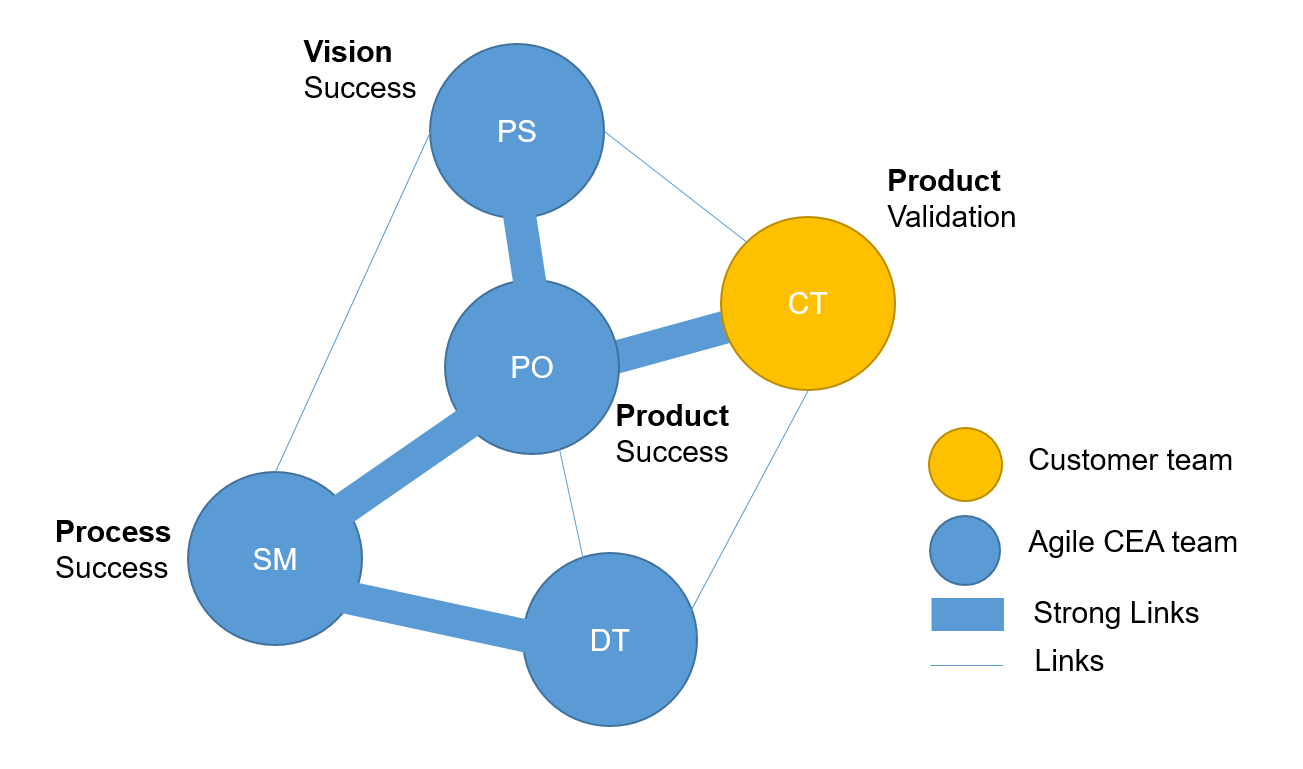Roles and Responsibilities
by Dr. Jimeno A. Fonseca, 2020, updated by Shanshan Hsieh, March 2020
This is a guide of roles and responsibilities in CEA. We use this to more formally coordinate our work. To check who is currently holding each position, we invite you to check here for more information.

Product Sponsor (PS)
The Project Sponsor is the person that has overall responsibility and accountability.
Responsibilities
Guarantee that our vision be successful by finding and securing the budget and ensuring that high-level organizational risks are mitigated.
Champion the project based on whether the work fits our research needs and overall strategy.
Empower the Product Owner to act for him/her on a more tactical basis.
Engagement
Participate in the Roadmap planning and review event (see Activities).
Product Owner (PO)
The Product Owner is the voice of the customer and performs all tactical operations.
PO Responsibilities
Guarantee our product success by acting as a conduit/facilitator for communication between the team and the customers.
The means to communication to the customers include:
Conducting Usability Tests
Organizing Teaching Activities
Maintaining Documentation
Maintaining CEA website
Maintaining cea@arch.ethz.ch
Distributing Newsletters
Coordinate the Roadmap planning and review event (see Activities).
Break down the overall vision into feasible and tactical pieces of work for the development team to understand and create.
Prioritizing and selecting user stories. This entails grooming the product backlogs with the help of the Srcum Master.
The product backlogs contains issues that is labelled as Must-have and Should-have. Here are the details of the labels used to categorize new issues in the CEA:
Label |
Description |
|---|---|
Must-have |
|
Should-have |
|
Won’t have |
|
PO Engagement
Participate in all Activities.
One day per week on communication to the customer team and event coordination.
Scrum Master (SM)
The Scrum Master is the servant leader and maintainer of agile practices.
SM Responsibilities
Coordinate all Activities that form the agile practices of the CEA.
Coordinate the training of new developers.
Introduce the functionalities in the CEA.
Introduce the CEA-ecosystem
Coordinate the training of the team
Pair-programming sessions
Refresher course on programming
Support the Product Owner on setting priorities and grooming the product backlog.
Maintaining the internal communication channel (slack).
Development Team (DT)
The Development team is the group of individuals who build CEA. His/her main responsibilities are:
Create the best working software possible.
Design, analyze, develop, test and document new features in CEA.
Be self-organized and self-directed.
Participate in all agile practices led by the Scrum Master (Activities).
Customer Team (CT)
The Customer team is the group of individuals who use CEA. They are not part of the CEA team, but their function is extremely important for the success of the project.
Represent one or more User Personas in CEA.
Validate CEA and give feedback to the Product Owner
Communicate issues and new features to the Product Owner.